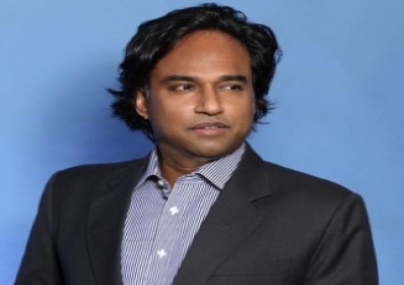
In recent years, construction companies in Asia have been enjoying a boom in countries’ pivot to infrastructure reforms. The construction market in the Asia-Pacific region has grown by 3.9 per cent in 2023, according to GlobalData. But the sector was also confronted by rising material costs and financial constraints due to global economic conditions. GCs in three construction companies share how they are capitalising on new momentum and taking on challenges ahead.
ALB: In the wake of today's challenging geopolitical landscape, how are you and your team helping your company navigate the evolving regulatory landscape in the construction industry across various Asian countries?
MUKUL SHASTRY, general counsel, Cube Highways: The world today is fraught with geopolitical uncertainty. The risks are not lingering at the periphery of the global world, but the challenges lie at the very core which transcends borders. The competition is no more within the borders or outside with private players but, at times, drives its power with the State's might and their size, economic power, and geographic leverage – influencing and shaping politics, economics, and commerce. Therefore, it is a must for players like us to understand these risks and chart out frameworks whether it be through joint ventures or otherwise, that may tackle such challenges.
We have had many such identified partners across the borders and with a solid database management system which helps us in finding out who would be the right partner for us. The strengths and weaknesses of different partners can be evaluated, and basis their strengths and weaknesses, we can chalk out right strategies. In addition to this, it helps us that we are backed by many global players like I-squared capital, Abu Dhabi Investment Authority (ADIA), Japanese Consortium, BCI, Mubadala, IFC - World Bank (erstwhile shareholder), et al. We can take the help of their allies and experiences in various geographies, and that helps us also to chart out our strategies.
BEN BURY, Group General Counsel, Gammon Construction: Most of Gammon’s work is in Hong Kong and Singapore. Hong Kong has, of course, been the focus of a lot of the geopolitical tension between the U.S./Europe and China, but Singapore has also been affected by cooling relations between the countries involved. The extent to which the geopolitical tension has contributed to the regulatory landscape in the construction industry in Hong Kong and Singapore is hard to say. I am new to my role as GC of Gammon, but the main role the Gammon legal team plays in helping the Gammon companies navigate the regulatory landscape does not appear to have changed in any significant way since these geopolitical tensions began to emerge. Our focus is and has always been on keeping abreast of the regulatory changes, informing the business units in a clear and straightforward way, and helping them mitigate any issues that may arise.
KEVIN LOO, head of legal and compliance, LBS Bina Group: Amidst the challenging geopolitical landscape, our legal team is crucial in navigating Asia's evolving construction industry regulations. We employ a proactive approach, continuously monitoring developments to maintain compliance with contracts, permits, and licenses. Collaborating closely with local and international legal consultants, we gain insights to ensure compliance and avoid non-compliance risks in new projects.
Our team also maintains open communication with relevant governmental and non-governmental bodies to stay informed on any upcoming regulatory changes and to provide such feedback, where necessary, on such proposed regulations. This proactive engagement ensures that the team are well-prepared for any changes and can adapt our strategies accordingly.
Our sustainability commitment aligns with regulatory compliance; this not only helps us meet regulatory requirements but further contributes to environmental protection, enhancing our position as a leading developer of sustainable communities amidst complex regulations.
ALB: Construction projects often involve multiple stakeholders with diverse interests. How do you facilitate effective communication and collaboration between legal teams, project managers, contractors, and other key players to address legal issues promptly and prevent delays or conflicts?
SHASTRY: A timely and effective communication is very much required in any industry, especially in construction. Clear and effective communication in construction has many advantages. The less misunderstanding and clarity of objectives there are, the fewer errors there will be. In construction, errors in design or implementation could be extremely dear, and undoing them would have huge financial and reputational implications.
A small miscommunication can have significant consequences in construction projects. By clearly communicating project goals, timelines, and specifications, all stakeholders can work together towards a common vision, minimising the risk of costly mistakes as well as facilitates timely and right decision-making. This, in turn, will help in avoiding delays and, thus, cost overruns. When information flows smoothly between project managers, superintendents, legal teams, engineers, contractors, and subcontractors, decisions can be made promptly, preventing bottlenecks and ensuring that work progresses smoothly.
As regards what we are doing for the same, we have in-house curated software CARRAR. This Contract Lifecycle Management software helps us not only consolidate the entire communication and contracts in one place, but helps with a single click to gauge the understanding of various teams and how they are working to efficiently achieve the common goal. Thus, the management can see on a real-time basis how the communication flow is taking place and if there are any glaring misunderstandings the same could be cleared by timely intervention.
The responsibility of this effective communication is given to a specially created department, namely Contracts, Claims & Risk Management (CCRM). This department CCRM has to ensure that the project communication and contracts are very well understood by all stakeholders, and that they all are working together to achieve the common goal. This has helped in reducing delays, managing costs, and more importantly, ensuring that all stakeholders are informed simultaneously.
BURY: It may be thought that construction projects are all about concrete and steel, but communication and collaboration are just as important to getting the project completed on time and within budget. Whilst it is correct that the stakeholders have diverse interests, they are aligned on one thing: getting the project completed as efficiently as possible. Issues will arise, and one of the great things about my new role is that I can get involved at an earlier stage to help with the communications between the various stakeholders to try and resolve those issues in a way that is fair and achieves the best outcome.
LOO: Effective communication and collaboration among stakeholders are vital to the success of our projects in the company. While virtual meetings have become commonplace, we also prioritise regular physical meetings to ensure all departments are updated on project statuses and to address any pending issues promptly.
To streamline communication internally, we have implemented Legal Request Memo System and Document Request Form to ensure efficient communication and thorough documentation, facilitating seamless information flow and minimising misunderstandings.
Identifying and pre-empting potential risks in each department is crucial as these areas have their own unique challenges. This proactive approach improves coordination and communication with external parties and stakeholders.
The team updates are crucial to ensure we are keeping abreast of legal developments. This helps bridge the understanding between our team and external legal support, fostering effective collaboration in addressing legal issues.
Additionally, we leverage technology to support our effective communication efforts. Project management software and collaboration tools are utilised to keep all stakeholders informed and engaged. These tools enable real-time updates, document sharing, and centralised communication, further enhancing our ability to address legal issues promptly and prevent delays or conflicts.
ALB: With the increasing focus on environmental sustainability, what legal considerations are prioritised in your construction projects, and how do you manage potential risks?
SHASTRY: The UN Framework on Climate Change, various COPs, India, and other Asia Pacific countries' commitment to sustainability is shaping the decision-making of the construction industry. The legal considerations that we have to consider in managing these potential risks can be identified as the sustainability framework (energy efficiency, water conservation, sustainable materials) and the regulations under which we work, choosing the right partners who have a history of compliance with extant environment sustainability norms, preparing a sustainability report and presenting it to our board on a regular basis, specific contractual clauses which goad our partners to our sustainability goals, performance standards, and usage of materials, liability coverages through curated insurance policies, and preparing a database of various construction judgments and precedents not only in India but across the world to understand the judiciary's approach to various regulatory prescriptions.
BURY: Environmental sustainability is a key concern for Gammon and a major focus for the business. The legal team has a close connection with the Gammon environmental team, and we are actively involved in as many of the sustainability initiatives as we can be. We also work with external organisations, such as the Construction Industry Council, on sustainability matters. The environment and legal team are working together with external consultants and law firms on a new initiative to bring some of the learnings from the Chancey Lane Project in the UK into the drafting of contracts in Hong Kong. In terms of managing risks for the projects, in an environmental context this involves ensuring that the projects are kept regularly informed about the changing environmental legislation and the focus of the numerous Government bodies charged with enforcing this legislation. Gammon’s environmental credentials are excellent, but we are always looking for ways to improve.
LOO: Amidst growing environmental concerns, our legal team prioritises key considerations to ensure our construction projects are aligned with stringent environmental laws and promote sustainable development.
One of our key initiatives is the establishment of robust waste management practices. We ensure that all waste reduction, reuse, and recycling protocols align with local and international environmental regulations to minimise waste and mitigate environmental impact, reducing the risk of non-compliance penalties.
Our emphasis on responsible material and pollution management involves selecting eco-friendly materials and implementing effective pollution control measures during construction. Working closely with project managers, we ensure the company is in compliance with environmental standards, mitigating potential environmental legal issues.
We diligently track environmental regulation changes to update our policies for sustainable construction. Prioritising these considerations showcases our commitment to sustainable communities, managing environmental risks effectively, and positioning the company as a leader in environmentally responsible construction.
ALB: The construction industry is notorious for its contractual complexities and potential disputes. How does your legal team approach contract negotiation, drafting, and enforcement to safeguard the interests of your company while fostering positive relationships with clients, subcontractors, and suppliers?
SHASTRY: The construction industry is fraught with disputes. There are substantial amounts of money that are stuck in various arbitration and contractual disputes, which has led to cash flow issues in various construction majors, and this has been one of the fundamental reasons as to why many big giants have failed too. Therefore, the approach to potential conflict needs to be scientific and unambiguous. We handle this most important risk as under:
The first and foremost is the contractual clauses. We have standardised templates, and we ensure we stuck to those templates. We generally don't allow deviation from the standard clauses, however, in unlikely scenarios where we have to agree for deviation, we then scrutinise that contract well and keep a constant vigil on the progress under that contract.
At times, the government clients will always have taken it or leave it attitude for the contracts. For that we need to ensure that our communication is spot on. The delays which are not due to our faults or any liability, whether in terms of cost or time, which is not owing our act or omission, has to be clearly communicated. Thus, a robust communication matrix is adhered to. The CCRM dept. is responsible for the same.
We generally foster an amicable and collaborative relationship with all our stakeholders. The clients, contractors, sub-contractors, government clients, independent engineers etc., are communicated clearly about our plans and approach. We generally take their inputs and, as much as possible, either implement it or, by dialogues try to tell it very early as to why the said decision could not be implemented. This transparent system helps in fostering trust. That mostly nips in the bud any potential dispute.
In an unlikely scenario where we have to end up landing at dispute, we try to solve it with mediation and dialogue as much as possible. At times, even if we have to take a little bit of financial hit, we go with that instead of pressing the trigger. Because, at the core, we are clear that trigger friendly approach won’t help in longer run.
Nonetheless, if all talks and mediation fail despite our best efforts, then we will have to rely on our litigation strategy. Given our robust communication matrix, we generally have enough and ample documentations to prove our point. We also mostly use institutional arbitration, preferably SIAC, for our arbitration, and that helps us in streamlining strategies.
BURY: Fostering positive relationships with our clients, subcontractors, and suppliers is of vital importance to Gammon’s continued success in the industry. However, there is a delicate balance between delivering what your clients want and ensuring that the company is protected from unnecessary risk. Where contracts are negotiated with subcontractors and suppliers, the legal team is always consulted and assists in the process.
Before Gammon tenders for any new project with a new or existing client, the legal team reviews the tender documents, including the draft contract and makes recommendations for drafting. Where possible, we will assist with the negotiations as well. The commercial and finance teams will also review the tender documents to ensure that the interests of the company are safeguarded to the best of our ability. In this way, decisions are made after careful review and consideration and where risks are taken, they are taken in an informed environment.
In terms of enforcement, Gammon will always look in the first instance at ways to resolve disputes amicably, and usually we find a way to do this. Where necessary, we have a good team of experienced litigators and dispute resolution professionals, as well as extensive relationships with law firms. Fortunately, we do not regularly have to resort to this, though.
LOO: Our legal team adopts a meticulous and strategic approach in contract negotiation, drafting, and enforcement. This approach ensures that the interests of the company are safeguarded while fostering positive relationships with the stakeholders.
Our negotiation strategy prioritises the company's interests while maintaining openness and transparency with the counterparty. This approach facilitates effective negotiations, ensuring that all parties have a clear understanding of their obligations and expectations. By fostering an atmosphere of mutual respect and cooperation, we aim to build long-term, positive relationships with our partners.
Understanding dispute resolution in the construction field is crucial due to the numerous practical considerations involved. These include managing risks related to land purchase, contractor performance, timelines, and delays. We take into consideration both the legal and commercial repercussions and strive for solutions that preserve our business relationships. Mediation and negotiation are preferred methods for dispute resolution, as they are less adversarial and more cost-effective. Initiating legal action is considered a last resort, used only when all other avenues have been exhausted.
By adopting this comprehensive and balanced approach to contract negotiation, drafting, and enforcement, our legal team effectively safeguards the company’s interests while fostering a collaborative and positive working environment with our external stakeholders.


